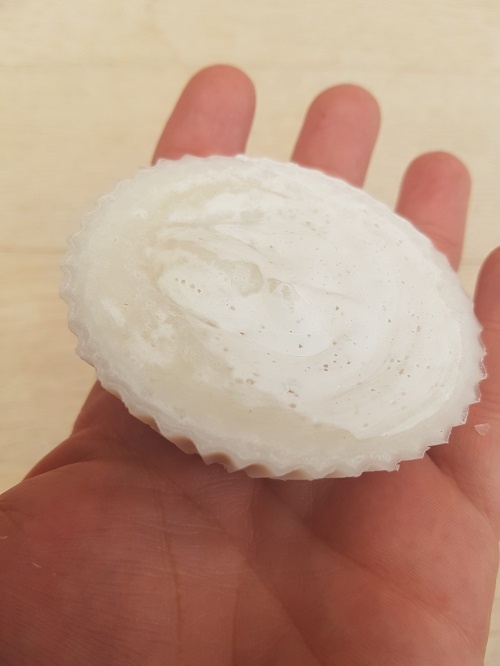The oldest trance of Marseille Soap was recorded around 1370. Original Savon de Marseille was made with pure Olive Oil, water from the Mediterranean Sea, and ash from sea plants. The soap was cooked for several days in a prolonged hot process and stirred all the time. Even after this long cooking time, the soap needs to cure for at least three weeks. By 1688, Louis XIV limited the name Savon de Marseille to Olive Oil-based soaps (no less than 75% Olive Oil), but that was later amended to allow other vegetable oils to be used.
If you would like to learn how to make soap with ash, please go to the recipe for FREE SOAP made out of waste.
There are many advantages to the Marseille Soap. It is biodegradable, hypoallergenic, nourishing, imperishable, and booth moth repellent, and antibacterial.
The colors of the Marseille Soap
The 100% pure Olive Oil Savon de Marseille is light green without adding any colorants. If you see a white Savon de Marseille is made from Palm Oil or mixed Palm and Coconut Oil.
There are no artificial colorants in this type of soap.
How to use the Marseille Soap
Traditionally it was used mostly as a domestic cleaner, but it is also great for the skin.
It is a perfect ingredient in homemade detergent washing powder.
The bars are often huge and Up to 40 kgs! If you go to a French supermarket, they will probably sell them in bars of 2 kgs or less. The soap is grated and diluted in water for household purposes.
The aroma in Marseille Soap
The soap is often without scent or has Lavender essential oil in it. You will, however, find it with Rosemary and Orange Blossom as well.
Soap Quality
| Soap Quality | Range | This Recipe |
| Hardness | 29 – 54 | 30 |
| Cleansing | 12 – 22 | 12 |
| Conditioning | 44 – 69 | 67 |
| Bubbly | 14 – 46 | 12 |
| Creamy | 16 – 48 | 18 |
| Iodine | 41 – 70 | 69 |
| INS | 136 – 165 | 135 |
Recipe for modern Savon de Marseille
- 75% Olive Oil 9 oz (255 grams)
- 18% Coconut Oil, 76 deg 2.16 oz (61 grams)
- 7% Palm Oil 0.84 oz (24 grams)
- Saltwater 4.56 oz (130 grams water with 5 grams salt)
- NaOH 1.65 oz (47 grams)
- Lavender Essential Oil 0.38 oz (11 grams)
Use the Hot Process Guide but keep in mind that the longer you cook and cure the soap, the better it will become. If you rather use the cold process, you need to let it cure for 6-12 months maybe more.
The salinity of the Mediterranean Sea
The salinity of the Mediterranean is uniformly high throughout the basin. Surface waters average about 38 parts per thousand except in the extreme western parts, and the salinity can approach 40 parts per thousand in the eastern.
Source Link
Soap Qualities
| Lauric | 9 |
| Myristic | 3 |
| Palmitic | 15 |
| Stearic | 3 |
| Ricinoleic | 0 |
| Oleic | 56 |
| Linoleic | 10 |
| Linolenic | 1 |
Watch this video about how the original soap is commercially made
FAQ
Yes, Savon de Marseille does not contain any animal products.
It is french for Soap from Marseille. Marseille is Frances’s second-largest city and the place where the soap was invented (or discovered). So, Savion de Marseille is the name for a special type of sope from this city.
Yes, you most certainly can. This soap is great for all-around use – even doing the dishes.




